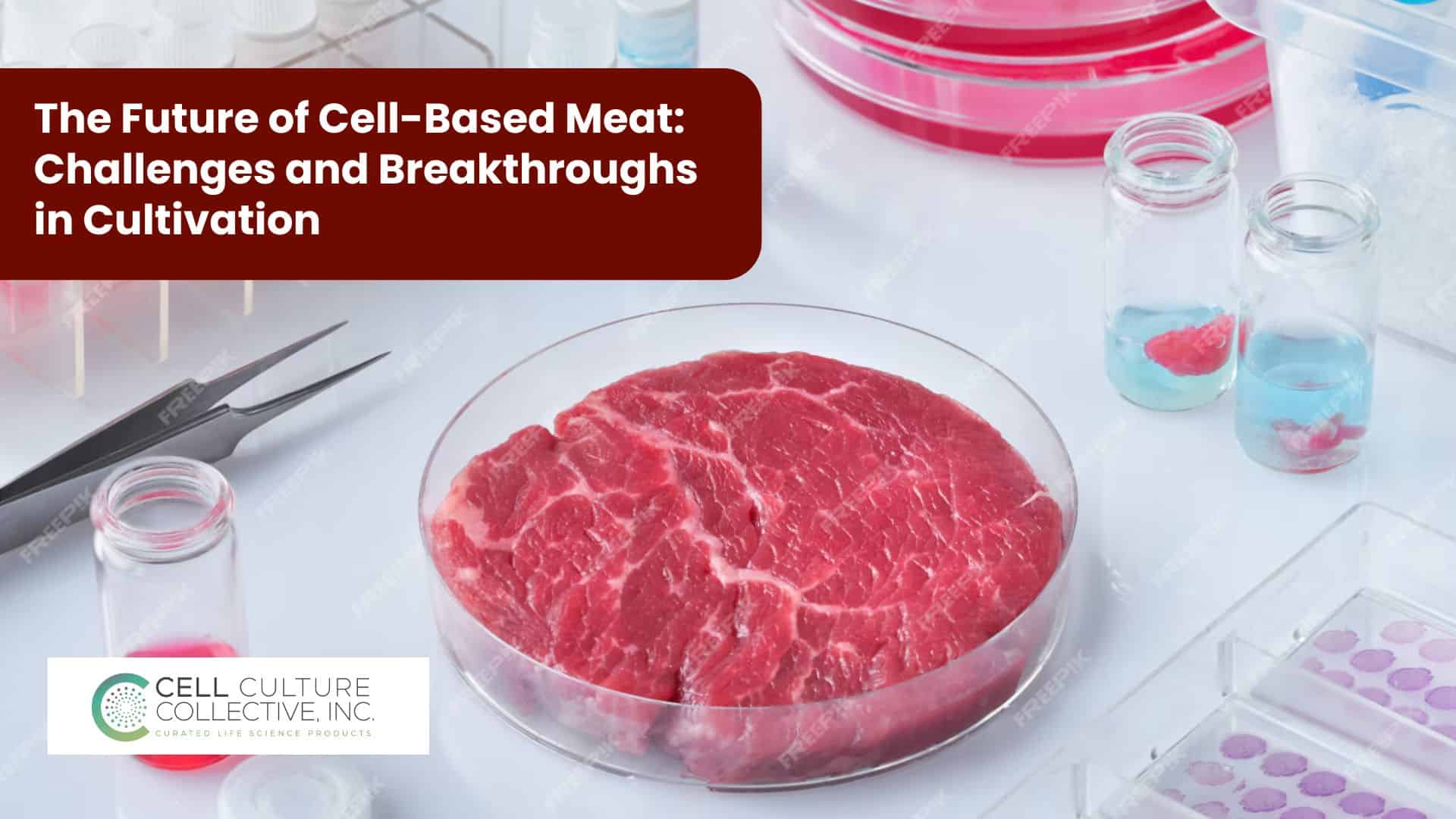Suspension cell culture is a foundational technique in modern research and biotechnology, enabling scientists to grow cells in a liquid medium rather than on a solid surface. This approach is particularly valuable for cells that naturally thrive in suspension, such as certain mammalian, insect, and plant cells. Its ability to support large-scale production has made it a preferred method for developing vaccines, therapeutic proteins, and conducting genetic studies.
Unlike adherent cultures, where cells require a surface to attach and grow, suspension cultures offer a scalable solution that simplifies processes like harvesting and nutrient distribution. This makes them indispensable in biopharma and industrial applications, where precision and efficiency are key.
In this guide, we’ll explore the essentials of suspension cell culture—how it works, the equipment required, and the challenges researchers often face. You’ll also learn about its wide-ranging applications and discover expert tips to optimize your techniques. Whether you’re a seasoned researcher or just starting, this comprehensive guide will help you navigate the intricacies of suspension cell culture with confidence.

Source: The Lab Label
What is Suspension Cell Culture?
Suspension cell culture is a method used to grow cells in a liquid medium where they remain free-floating, rather than attaching to a surface. This technique is ideal for cell types that naturally exist in suspension, such as certain mammalian, insect, and plant cells, and is a cornerstone for large-scale biopharmaceutical production and advanced research.
How Suspension Culture Works
Cells are placed in a specially designed liquid medium that provides all the nutrients required for growth. Gentle agitation, either through shaking or stirring, keeps the cells uniformly suspended and ensures even distribution of oxygen and nutrients. This environment mimics the conditions needed for cells to thrive, supporting both cell proliferation and product formation.
Key Differences: Suspension vs. Adherent Culture
| Aspect | Suspension Culture | Adherent Culture |
| Cell Growth | Free-floating in liquid medium | Attached to a solid surface |
| Scalability | Easily scalable for large volumes | Limited scalability |
| Applications | Biopharma, vaccines, antibody production | Tissue engineering, 2D cell studies |
| Ease of Harvesting | Cells are already in liquid for processing | Requires detachment from surfaces |
What Cells Are Grown in Suspension?
- Mammalian Cells: Widely used for producing therapeutic proteins and monoclonal antibodies. For example:
- CHO (Chinese Hamster Ovary) cells.
- HEK (Human Embryonic Kidney) cells.
- Insect Cells: Frequently used for recombinant protein expression. Popular examples include:
- Sf9 and Sf21 cells in baculovirus expression systems.
- Plant Cells: Essential for secondary metabolite production and genetic studies.
When to Use Suspension Culture
Suspension culture is the method of choice when:
- Large-scale production is required.
- Uniform nutrient exposure is critical.
- Adherent culture limitations, such as surface dependency, become a bottleneck.
Suspension Cell Culture Techniques and Equipment
Suspension cell culture depends on well-designed techniques and equipment to create optimal conditions for cell growth. Whether you’re conducting small-scale research or industrial-scale production, these tools ensure cells receive the nutrients, oxygen, and gentle agitation they need to thrive.
Techniques in Suspension Culture
Suspension culture methods vary depending on the scale and purpose of the experiment. In batch culture, cells are grown in a fixed volume of medium, making it suitable for shorter experiments or endpoint analysis. Fed-batch culture, on the other hand, involves adding nutrients over time, extending the growth phase and increasing yields—perfect for biopharmaceutical production. For long-term growth, continuous culture maintains cell viability by constantly refreshing the medium, a technique commonly used in large-scale bioreactors.
Essential Equipment for Suspension Culture
The choice of equipment plays a significant role in the success of suspension cell culture. Shaker flasks are a staple in most labs, providing gentle agitation for smaller-scale experiments. For researchers requiring more precise control, spinner flasks offer a reliable solution with magnetic stirring capabilities. At the industrial level, bioreactors become essential. Stirred tank bioreactors are a popular choice for their efficient mixing and oxygenation, while airlift bioreactors reduce shear stress by using bubbles to circulate the medium.
Tailoring the Setup to Your Needs
Your choice of technique and equipment will depend on your specific objectives. For research labs, tools like shaker or spinner flasks are cost-effective and practical. In contrast, bioreactors are essential for scaling up to industrial production, where precision and high yields are non-negotiable.
Advantages of Suspension Cell Culture
Suspension cell culture has become a preferred technique for researchers and biomanufacturers due to its efficiency and versatility. Here’s why this method stands out:
1. Scalability for Large-Scale Production
One of the biggest strengths of suspension culture is its ability to support large-scale cell growth. Unlike adherent cultures that are limited by surface area, suspension cultures allow cells to grow freely in a liquid medium, making it easier to produce large quantities for biopharmaceuticals and industrial applications.
2. Uniform Nutrient Distribution
The constant agitation of the liquid medium ensures that all cells have equal access to nutrients and oxygen. This uniform environment promotes consistent cell growth and viability, reducing variability and enhancing the reproducibility of results.
3. Simplified Harvesting and Processing
Since cells in suspension are already floating in the medium, harvesting them is much simpler compared to adherent cultures. This ease of processing makes suspension cultures particularly advantageous in downstream workflows, such as separating cells or extracting products like monoclonal antibodies.
4. Versatility Across Cell Types
Suspension culture is compatible with a variety of cell types, including mammalian, insect, and plant cells. This versatility makes it an essential tool for applications ranging from vaccine production to genetic research.
5. Adaptability to Advanced Techniques
Suspension cultures are easily integrated with advanced technologies like bioreactors and automated cell viability analyzers, allowing researchers to optimize and scale their experiments efficiently.

Source: Freepik
Challenges and Troubleshooting in Suspension Cell Culture
While suspension cell culture offers numerous advantages, it comes with its own set of challenges. Understanding these potential hurdles and knowing how to address them can help researchers achieve more reliable results.
1. Shear Stress from Agitation
Constant agitation in suspension culture can expose cells to shear forces, potentially damaging fragile cell types. To minimize this, researchers often adjust stirring speeds or choose bioreactors designed to reduce turbulence, such as airlift systems.
2. Contamination Risks
The open nature of suspension culture systems increases the risk of contamination by bacteria, fungi, or viruses. Strict aseptic techniques, regular monitoring, and the use of closed bioreactor systems can help mitigate these risks and maintain a sterile environment.
3. Nutrient Depletion
As cells grow and multiply, they consume nutrients rapidly, which can lead to depletion in batch cultures. To address this, fed-batch or continuous culture systems are employed to replenish the medium and maintain optimal growth conditions.
4. Difficulty in Scaling Up
Scaling from small-scale experiments to industrial production can introduce variability in cell growth and productivity. Careful optimization of parameters like agitation, aeration, and nutrient supply is crucial to ensure consistency across scales.
Proactive Solutions
By investing time in optimizing culture conditions and using advanced equipment, researchers can overcome these challenges and unlock the full potential of suspension cell culture. Regular troubleshooting and adapting techniques to specific cell lines further improve outcomes.
Applications of Suspension Cell Culture
Suspension cell culture has revolutionized several fields, driving advancements in medicine, research, and agriculture. Let’s explore its most impactful applications:
🧬 Biopharmaceutical Production
Suspension cultures are at the heart of biopharma, enabling the mass production of:
- Monoclonal Antibodies: Used in therapies for diseases like cancer and autoimmune disorders.
- Vaccines: Critical for developing vaccines, including influenza and COVID-19.
- Enzymes and Proteins: Used in treatments and diagnostics.
Example: CHO cells in suspension are the gold standard for producing therapeutic proteins, thanks to their high yield and scalability.
🔬 Research and Development
Suspension culture plays a pivotal role in studying cell behavior and testing new therapies:
- Virology: Used to study virus-host interactions and develop antiviral drugs.
- Cancer Research: Supports testing of new chemotherapies and immunotherapies.
- Genetic Studies: Facilitates gene editing techniques like CRISPR-Cas9.
Why It Works: The uniform environment in suspension cultures ensures reliable and reproducible results.
🌾 Agriculture and Plant Biotechnology
Plant cells in suspension are used to create sustainable solutions for agriculture:
- Secondary Metabolites: Production of valuable compounds like alkaloids and flavonoids for pharmaceuticals.
- Genetic Engineering: Enables the creation of drought-resistant or pest-resistant crops.
- Preservation: Helps conserve endangered plant species by propagating cells in vitro.
Fun Fact: Suspension cultures have been key in creating high-yield crop varieties, supporting global food security.
Future Trends in Suspension Cell Culture
Suspension cell culture is evolving alongside advancements in technology and research, transforming its capabilities and applications. Let’s dive deeper into the trends that are redefining this field:
1. Merging Suspension Culture with 3D Cell Growth
Traditionally, suspension culture has been used to grow cells as single entities in a liquid medium. However, the integration of 3D cell culture techniques is a game-changer. By forming spheroids or organoids in suspension, researchers are now able to mimic tissue-like structures, offering more realistic models for drug testing and disease research.
For example, 3D suspension systems are enabling the creation of liver organoids that can predict drug toxicity more accurately than traditional methods. These advancements are accelerating the development of safer, more effective pharmaceuticals.
2. Automation and AI in Bioprocess Optimization
The future of suspension cell culture lies in precision, and automation is leading the charge. Modern bioreactors equipped with real-time sensors and AI-driven controls are optimizing parameters like pH, nutrient supply, and oxygenation without human intervention.
This evolution allows researchers to scale up their cultures while maintaining consistency and reducing errors. A case in point is the use of automated fed-batch systems in vaccine production, where minute adjustments significantly enhance yields.
3. Personalized and Precision Medicine
Suspension culture is playing a critical role in personalized medicine, enabling the creation of therapies tailored to individual patients. By cultivating patient-specific cells in suspension, researchers can develop monoclonal antibodies, CAR-T therapies, and even autologous cell treatments.
This approach is particularly impactful in oncology, where suspension-cultured cells are being used to test customized treatments against specific cancer types, improving success rates.
4. Eco-Friendly Innovations in Biomanufacturing
Sustainability is becoming a priority in all scientific fields, and suspension culture is no exception. Researchers are now exploring:
- Renewable, plant-based components for culture media to reduce reliance on animal-derived materials.
- Energy-efficient bioreactors that minimize resource consumption.
- Waste reduction strategies to make large-scale production greener.
These changes align with global efforts to create sustainable biotech solutions, making science more responsible and future-proof.
5. Expansion into New Research Frontiers
Suspension culture is paving the way for advancements in emerging fields like synthetic biology and regenerative medicine. By enabling scalable production of engineered cells, this technique supports breakthroughs in:
- Bioprinting functional tissues for transplantation.
- Producing synthetic biomolecules with programmable functions.
- Creating organ-like systems for advanced disease modeling.
Conclusion
Suspension cell culture is a gateway to innovation in science, medicine, and biotechnology. By providing a scalable, efficient, and versatile way to grow cells, it has become indispensable in producing life-saving therapies, advancing research, and solving some of humanity’s most pressing challenges.
Whether you’re crafting monoclonal antibodies, exploring the potential of personalized medicine, or driving breakthroughs in agriculture, suspension culture offers the tools to turn ideas into reality. As 3D cell cultures, automation, and sustainable biomanufacturing continue to evolve, the possibilities for this technique are limitless.
For researchers, the future of suspension cell culture is not just about mastering the method but about reimagining what’s possible in your field. With the right techniques and a commitment to innovation, there’s no limit to what you can achieve.










